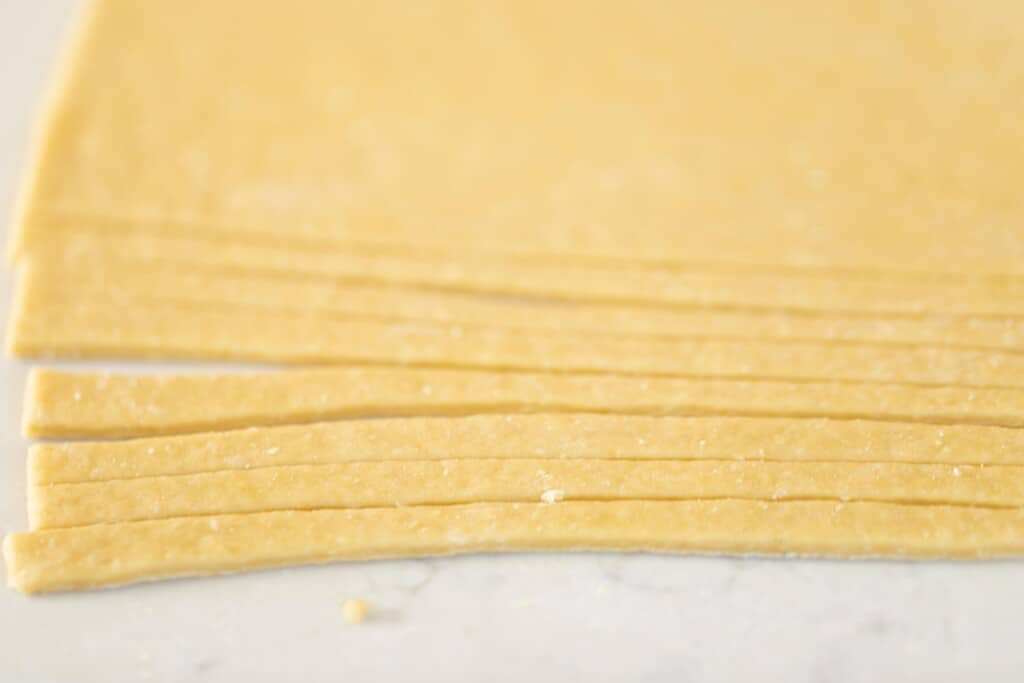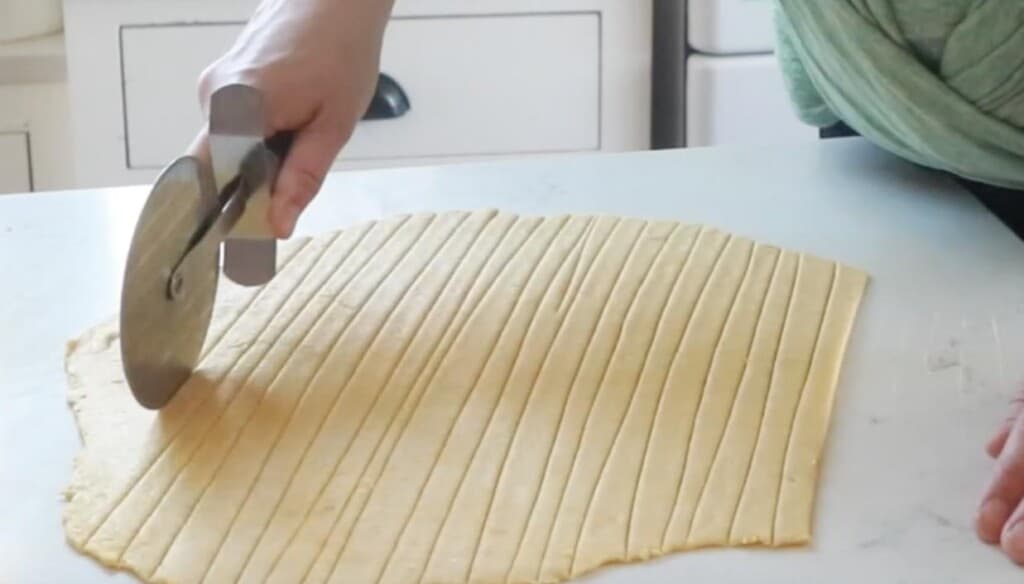Why are my homemade noodles tough?
This can be the result of over-kneading the dough or adding too much flour.

Flour: Einkorn flour or all-purpose will work. When I am unable to ferment the flour, I prefer to use einkorn.
Milk: Since whole milk contains more fat, I like to use it.
Eggs: Just good ol’ large eggs will do. I love using pasture raised eggs. Their yolks have a rich, golden orange color that gives the dough a gorgeous yellow hue, and they are loaded with more nutrients than eggs raised the traditional way.
Salt: It’s easy to forget to add salt, but I can assure you that even a small pinch of salt enhances the flavor of this pasta. If you don’t have it, your pasta will taste rather boring.

Measuring cups and spoons
Grain mill (optional) – I love my new Mockmill. I also have this Nutrimill that is a more affordable option.

What kind of noodles are best for soup?
Although it really depends on your taste, it’s usually best to use pasta that doesn’t absorb a lot of liquid because that will result in mushy noodles.
The most popular option is usually egg noodles, which I especially enjoy using these homemade ones. Other good pasta options include elbow, orzo, fettuccine, and linguine.
If you want to make a gluten-free soup, you can also use gluten-free pasta.

How To Make Homemade Noodles:

In a large bowl, add eggs, flour, milk, and salt.
Mix the ingredients together with your hands (you can also use a stand mixer for this). Knead the dough for a few minutes until it forms a ball and is smooth and not lumpy.

Einkorn takes two to three minutes, while all-purpose takes ten to fifteen minutes. Add flour one tablespoon at a time to the dough if it’s too sticky until it stops being sticky.
*Sidenote: Einkorn doesn’t need to be kneaded like all-purpose. If you’re using einkorn flour, simply stir until combined. It is recommended to knead all-purpose flour for nearly ten minutes in order to ensure proper development of the gluten strands.
Allow the dough to rest for 5-10 minutes uncovered. Avoid leaving it too long as it may become dry. Alternatively, you could roll it out after covering it and putting it in the refrigerator for a few hours.

Roll out the dough to about 1/4 inch with a rolling pin. Turn it frequently. It’s unlikely that you’ll need to use flour to dust your stone countertops. Dust with a little flour if you’re using a different kind of surface, such as a wood cutting board, to help prevent sticking.

Using a pizza cutter, cut the dough into the desired length and shape for your noodles—longer for fettuccine-style noodles, or smaller for soup noodles.

Cook for three to five minutes, being cautious not to overcook, in salted boiling water or directly in soup.
Freeze: Simply form the dough according to the recipe’s instructions and freeze it in an airtight container for easy freezing. Allow to thaw before rolling and slicing.
Additionally, you can freeze the noodles by following the recipe’s instructions, slicing them, and then wrapping each one in a single layer of parchment paper, making sure the noodles stay apart as much as possible.
After a few hours of freezing, transfer to a storage bag and store in the freezer for up to three months.
Fridge: Allow the noodles to dry for 1-2 hours. Store in the refrigerator for up to three days in an airtight container.